Accept all cookies Accept only essential cookies See our Cookie Notice

About ESA
The European Space Agency (ESA) is Europe’s gateway to space. Its mission is to shape the development of Europe’s space capability and ensure that investment in space continues to deliver benefits to the citizens of Europe and the world.
Highlights
ESA - United space in Europe
This is ESA ESA facts Member States & Cooperating States Funding Director General Top management For Member State Delegations European vision European Space Policy ESA & EU Space Councils Responsibility & Sustainability Annual Report Calendar of meetings Corporate newsEstablishments & sites
ESA Headquarters ESA ESTEC ESA ESOC ESA ESRIN ESA EAC ESA ESAC Europe's Spaceport ESA ESEC ESA ECSAT Brussels Office Washington OfficeWorking with ESA
Business with ESA ESA Commercialisation Gateway Law at ESA Careers Cyber resilience at ESA IT at ESA Newsroom Partnerships Merchandising Licence Education Open Space Innovation Platform Integrity and Reporting Administrative Tribunal Health and SafetyMore about ESA
History ESA Historical Archives Exhibitions Publications Art & Culture ESA Merchandise Kids Diversity ESA Brand Centre ESA ChampionsLatest
Space in Member States
Find out more about space activities in our 23 Member States, and understand how ESA works together with their national agencies, institutions and organisations.
Science & Exploration
Exploring our Solar System and unlocking the secrets of the Universe
Go to topicAstronauts
Missions
Juice Euclid Webb Solar Orbiter BepiColombo Gaia ExoMars Cheops Exoplanet missions More missionsActivities
International Space Station Orion service module Gateway Concordia Caves & Pangaea BenefitsLatest
Space Safety
Protecting life and infrastructure on Earth and in orbit
Go to topicAsteroids
Asteroids and Planetary Defence Asteroid danger explained Flyeye telescope: asteroid detection Hera mission: asteroid deflection Near-Earth Object Coordination CentreSpace junk
About space debris Space debris by the numbers Space Environment Report In space refuelling, refurbishing and removingSafety from space
Clean Space ecodesign Zero Debris Technologies Space for Earth Supporting Sustainable DevelopmentLatest
Applications
Using space to benefit citizens and meet future challenges on Earth
Go to topicObserving the Earth
Observing the Earth Future EO Copernicus Meteorology Space for our climate Satellite missionsCommercialisation
ESA Commercialisation Gateway Open Space Innovation Platform Business Incubation ESA Space SolutionsLatest
Enabling & Support
Making space accessible and developing the technologies for the future
Go to topicBuilding missions
Space Engineering and Technology Test centre Laboratories Concurrent Design Facility Preparing for the future Shaping the Future Discovery and Preparation Advanced Concepts TeamSpace transportation
Space Transportation Ariane Vega Space Rider Future space transportation Boost! Europe's Spaceport Launches from Europe's Spaceport from 2012Malé, the Maldives
Thank you for liking
You have already liked this page, you can only like it once!
The Copernicus Sentinel-2 mission takes us over Malé – the capital and most populous city in the Republic of Maldives.
The Republic of Maldives consist of a chain of around 1200 small coral islands that are grouped into clusters of atolls – scattered across 90 000 sq km of ocean. A number of these little islands can be seen in the image, with the turquoise colours depicting clear, shallow waters dotted by coral reefs which contrasts with the dark colours of the Indian Ocean.
Malé, located at the southern edge of the North Malé Atoll, can be easily spotted in the right of the image. The island is small enough to walk around in approximately one hour, with most sights concentrated on its northern shore. Malé is both a trade and tourist centre, connected with Sri Lanka and India by steamship lines, with several vessels visible in the image.
With a population of more than 200 000 and an area of around eight sq km, Malé is one of the most densely populated cities in the world with the city covering almost the entire island.
With more than 80% of the Maldives’ land standing less than one metre above average sea level, the Maldives has the lowest terrain of any country in the world. This makes the archipelago particularly vulnerable to sea-level rise.
In response to this rising threat, the Maldives is working on enhancing the resilience of the country’s islands, which includes constructing the artificial island of Hulhumale – visible northeast of the airport island of Hulhulé.
The island has been constructed by pumping sand from the seafloor onto a submerged coral platform, that rises around 2 m above sea level. The reclaimed land provides some much-needed space, and will also help meet the industrial and commercial development of the Malé region.
Satellite data have shown that the global ocean has risen, on average, 3 mm a year over the last 25 years. Warming ocean waters, melting glaciers and diminishing ice sheets is making rising sea levels a real threat for low-lying islands such as the Maldives.
Following liftoff in November 2020, the Copernicus Sentinel-6 Michael Freilich satellite, the most advanced mission dedicated to measuring sea-level rise, is now fully operational – meaning that its data are available to climate researchers, ocean-weather forecasts and other data users. Learn more about the Sentinel-6 mission here.
This image, also featured on the Earth from Space video programme, was captured by the Copernicus Sentinel-2 mission – a two-satellite mission to supply the coverage and data delivery needed for Europe’s Copernicus programme.
-
CREDIT
contains modified Copernicus Sentinel data (2019), processed by ESA -
LICENCE
CC BY-SA 3.0 IGO or ESA Standard Licence
(content can be used under either licence)
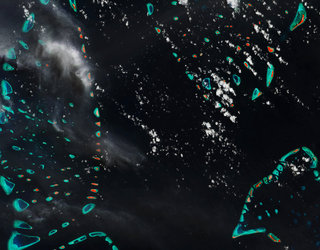
Jewels of the Maldives
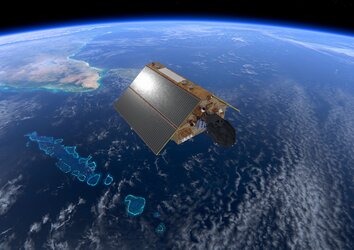
Copernicus Sentinel-6 over the Maldives
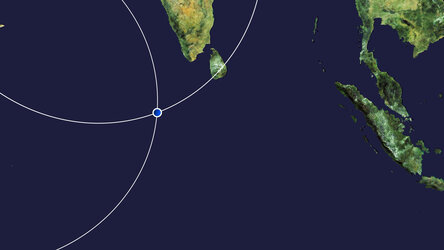
Earth from Space: Malé, the Maldives
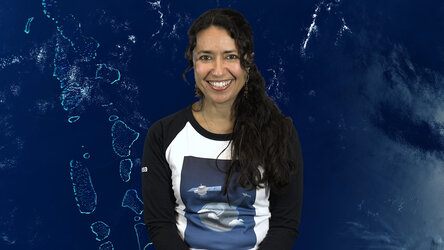
Earth from Space: Republic of Maldives
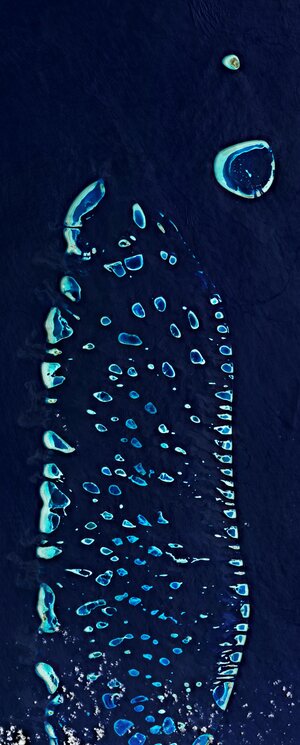














 Germany
Germany
 Austria
Austria
 Belgium
Belgium
 Denmark
Denmark
 Spain
Spain
 Estonia
Estonia
 Finland
Finland
 France
France
 Greece
Greece
 Hungary
Hungary
 Ireland
Ireland
 Italy
Italy
 Luxembourg
Luxembourg
 Norway
Norway
 The Netherlands
The Netherlands
 Poland
Poland
 Portugal
Portugal
 Czechia
Czechia
 Romania
Romania
 United Kingdom
United Kingdom
 Slovenia
Slovenia
 Sweden
Sweden
 Switzerland
Switzerland
























